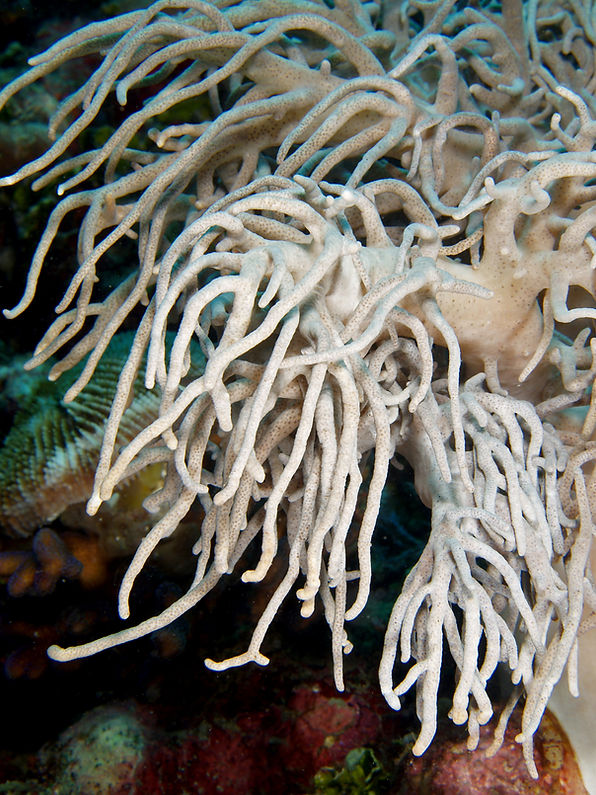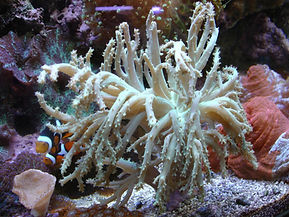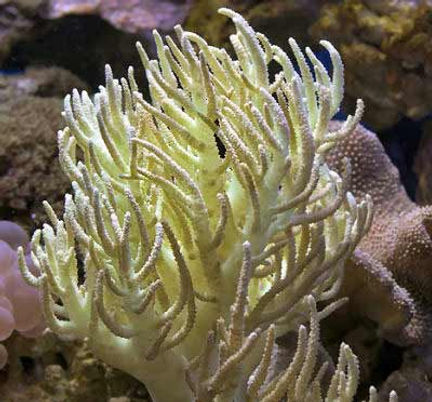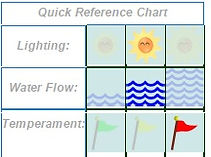Family: Alcyoniidae - Sinularia
1-Cabbage Leather Coral
Flower Leather Coral, Flat Leather Coral
Lobed Leather Coral, Carpet Coral, Lettuce Coral
Sinularia dura
The Cabbage Leather Coral is one of the hardiest soft corals and is excellent for beginners!
One of the nicest things about the Cabbage Leather Coral Sinularia durais that it is as attractive as it is durable. It can be found in colors ranging from brown, tan, cream, pink, purple, yellow and gray; and at times may be a more colorful green. It has broad, blunt "leaves" resembling those of a cabbage or lettuce, and yet they have a delicate look to them, almost like a flower. The lobed projections have delicate radial striations and infolding along their fringe.
The S. dura form small, low-growing colonies on hard substrates such as rubble or dead corals. They can grow so densely that their prominent "leaves" will often overlap. They have retractable autozooid (feeding) polyps that are more concentrated on the edges of the leaves. The tissue is dry and leathery, thus the term "leather coral". It is tough and not easily torn, so they are not as sensitive to handling as other soft corals, especially when propagation is done.
The Cabbage Leather Coral is known by many common names including Flower Leather Coral, Flat Leather Coral, Lobed Leather Coral, Carpet Coral, Cabbage Coral, and Lettuce Coral. Because it is similar in form to other leathers, many of the same common names are used interchangeably such as Leather Coral, Finger Leather, Ruffled Leather Coral, Cabbage Leather Coral, Finger Leather Coral, Scalloped Leather Coral, and Knobby Leather Coral. The S. dura is related to the Sarcophyton leather corals, such as the Yellow Leather Coral S. elegans, but the difference is that it has a close, low growing ruffled shape. When ordering this or any other leather coral, its best to make sure you use the scientific name.
The Cabbage Leather Coral is easy to keep, making it a great soft coral for the beginner. As with all Sinularia sp., it is one of the the most forgiving as far as light and water flow is concerned, and it is an easy coral to propagate. They like a moderate to strong water flow and adapt to all types of lighting, though moderate is usually best. They are toxic toward other corals due to their release of terpenes (poisons used to ward off encroaching corals), so they do need plenty of space.
Where Sinularia Corals Are Found: The S. dura are found in the Red Sea and Indo-Pacific.
Sinularia Coral Habitat: Most S. dura are found near the shore in shallow water on reef flats and lagoons, attached to rubble. They can thrive in the turbid waters within large colonies, due to their thick bases.
Scientific name :
Family: Alcyoniidae
Species: Sinularia dura
Status :
The Sinularia dura is not listed on the IUCN Red List for Endangered Species.
Description :
What do Sinularia Corals look like: The Cabbage Leather Coral S. dura form small, low-growing colonies on hard substrates such as rubble or dead corals. It has broad, blunt "leaves" resembling those of a cabbage or lettuce, and yet they have a delicate look to them, almost like a flower. They can grow so densely that their prominent "leaves" will often overlap. They have retractable autozooid (feeding) polyps that are more concentrated on the edges of the leaves. The tissue is dry and leathery, thus the term "leather coral". It is tough and not easily torn, so they are not as sensitive to handling as other soft corals, especially when propagation is done.
The S. dura can be brown, tan, cream, pink, purple, yellow and gray, and at times may be a more colorful green. They are not naturally fluorescent, since that is a dyed coral. The lobed projections have delicate radial striations and infolding along their fringe. They can get to 24" (61 cm) or more, tall or wide.
Difficulty of Care :
Leather Coral Care: The Cabbage Leather Coral S. dura is easy to keep, making it a great soft coral for the beginner. They like a moderate to strong water flow and adapt to all types of lighting, though moderate is usually best. They are not as sensitive to handling as other soft corals, especially when propagation is done. But they are toxic toward other corals due to their release of terpenes (poisons used to ward off encroaching corals), and they do grow large, so they need plenty of space. They also regularly shed their top layers.
Foods / Feeding :
Leather Coral Feeding: In the wild, Sinularia corals have developed several feeding strategies. They capture microscopic food particles from the water column and can absorb dissolved organic matter. They are also photosynthetic, having a symbiotic relationship with a marine algae known as zooxanthellae, where they also receive some of their nutrients.
In captivity, they may be fed microplankton. This is especially important if the light is not on the higher end to support the zooxanthellae. When feeding the polyps are out, and as nutrients are captured, the polyps retract.
Aquarium Care :
Stable tank conditions are needed to keep the Sinularia genus. A water change that is a standard for any reef system, not to exceed 30% is needed. In general, a typical water change of 20% a month or 10% biweekly, depending on the bio load, is sufficient. Some have found success by doing a 5% water change once a week, keeping water quality high and reducing the need for most additives. Soft corals do need to have proper chemical levels for good growth.
Iodine is used up quickly in captive environments, and does need to be added to the top off water or to the tank regularly. Make sure you have a test to make sure your levels are sufficient. Frequent water changes are preferred over adding extra supplements.
Suggested levels for Sinularia species are:
-
Calcium: 385 - 450 ppm (Seachem makes a calcium additive that states 385 as sufficient. Anything over 400 tends to wear on pumps and other moving parts.)
-
Alkalinity: 3.2 - 4.8 MEQ/L (8 to 12 dKh - 10 is recommended)
-
Phosphates: 0, zero.
-
Magnesium: 1200 - 1350 ppm. (Magnesium makes calcium available, so if your calcium is low, check your magnesium levels before adding any more calcium.)
-
Strontium: 8 - 10. Strontium levels are suggested to keep the coral happy, and a kit for testing proper levels is suggested.
Aquarium Parameters :
A typical live rock/reef environment is what is needed for your Cabbage Leather Coral, along with some fish for organic matter production and plenty of room to grow.
Provide proper lighting and water movement. They need a moderate to stong water flow. Make sure the water flow does not shoot a straight hard stream directly at the coral, only random water current. They like moderate to high lighting, but if using metal halides, they need to be adapted slowly. The Sinulariagenus is very aggressive toward other corals so be sure to provide plenty of room between species, and they can be toxic to stony corals
-
Minimum Tank Size / Length: 50 gallon (190 L) or larger
-
Marine Lighting: All, with moderate to high being best (slow adaptation to metal halides).
-
Temperature: 72° - 80° F (22° - 26° C)
-
Salinity / Specific Gravity: 1.023 - 1.025
-
Water Movement: Low to moderate, with a random flow is suggested.
-
Water Region: All areas of the aquarium
Compatibility and Social Behaviors :
The Cabbage Leather Coral is very aggressive. The S. dura is toxic toward other corals due to their release of terpenes (poisons to ward off encroaching corals). They have been known to harm some stony coral species ofAcropora like the Staghorn Acropora A. formosa, some species of Porites like P andrewsii, as well as the death ofCatalaphyllia, Euphyllia, and Plerogyra species.
In the wild two copepod species, Paramolgus ostentus and P. eniwetokensis, are known to live in association with the S. dura. If pests are present, they can usually be removed with a simple 5 minute freshwater dip.
Sex - Sexual differences :
Specifically, the Sinularia polydactyla have females that remain erect and males retract and become flaccid during spawning. Other species are still being studied in this regard. The S. dura, once mature, will drop clones of themselves.
Breeding and Reproduction :
In the wild, the Sinularia genus use several different forms of reproduction, such as fission, fragmenting and/or branch dropping.
The Cabbage Leather Coral is easy to propagate. In general, the Sinularia species can be fragged for just a small piece or for a large frag, but with a few variations in procedure. Using either procedure, the coral will more than likely deflate, but with good water flow it will recover. Corals can emit a nasty and at times noxious odor, so be sure there is good ventilation. Clean up any mucous when finished to prevent any possible health problems.
To frag a small piece:
-
Make sure your leather is healthy.
-
You may use a pair of very sharp scissors or a scalpel.
-
Simply cut a small frag away from the mother colony while still in the tank. Segments of 3" have the best survivability while those under 1/2" have the lowest record of survivability.
-
Constricting slowly with rubber bands, tighter fitting as the separation continues, is another method.
-
Loosely rubber band the frag between branches and affix to a small piece of rubble that has a natural indent or a plug.
For larger fragging:
-
The leather coral should have all polyps retracted before proceeding.
-
Remove the coral from the tank, and quickly perform the fragmentation from a mother colony with a clean razor, scalpel, or knife. (scissors can damage tissue from larger fragging cuts.)
-
Provide a bath of clean, temperature and salinity adjusted, water (same as main tank) with a little iodine before returning to the tank. This bath will help clear out the mucous that the leather will produce from this procedure.
-
The frag can be glued, tied, sewn to a rock or plug, or just set on rubble where the current will not take them away, but will help them heal. This depends on the size and shape of the frag.
-
Return the leather to the same spot it was in before fragging and discard bath water. This placement will depend on the size and shape of the frag.
Potential Problems :
The Sinularia genus is generally very hardy and adaptable, but can contract disease. Coral diseases are commonly caused by stress, shock (like pouring freshwater into the tank and it coming in contact with the leather), and incompatible tank mates including specific fish, or pests.
Some diseases and treatments include:
-
Flatworms, Brown Jelly Infections, cyanobacteriaTreat with a freshwater dip of 1 to 3 minutes in chlorine free freshwater of the same temperature and pH as the main display.
-
Cyanobacteria, Brown Jelly InfectionsThese can also be treated with Neomycin sulphite, Kanamycin and other broad-spectrum antibiotics. The pill can be pulverised into a fine powder, mixed with sea water to make a paste, and then applied to the wound or affected site of the coral with a simple artists brush.
-
Necrosis, Black Band DiseaseTo prevent necrosis, and fight black band disease, according to one author the corals can be treated with Tetracycline at 10 mg per quart/liter.
-
Lugol's Solution (as a preventative/cure)Use a Lugol's dip at 5-10 drops of 5% Lugol's solution per quart/liter of newly mixed sea water that has been mixing for 10-20 minutes. Start with a 10 minute dip and observe the reaction of the coral. A daily dip can be done until the coral is cured.
-
AmputationOne procedure that can save a coral's life if nothing else is working is amputation of the affected area. This must be done in a separate container consisting of some of the tank's water. Cut slightly into healthy tissue surrounding the diseased flesh then reattach the coral to the substrate with the open wound cemented on part of the reef structure.
-
"Liquid Band Aid"For wounds that are on the side or top, some have used "liquid band aid" or super glue to seal the wound.
Availability :
Soft Corals for Sale: The Cabbage Leather Coral S. dura is very easy to find pet shops and on line. Online they can run about $40.00 to $49.00 USD, or more, depending on size and/or color.
References :
-
Animal-World References: Marine and Reef
-
Anthony Calfo, Book of Coral Propagation, Volume 1 Edition 2: Reef Gardening for Aquarists, Reading Trees; 2nd edition, 2007
-
Harry Erhardt and Horst Moosleitner, Marine Atlas Volume 2, Invertebrates (Baensch Marine Atlas), Mergus Verlag GmbH, Revised edition, 2005
-
Ronald L. Shimek, Guide to Marine Invertebrates: 500+ Essential-to-Know Aquarium Species, Microcosm, 2005
-
Eric Borneman, Aquarium Corals: Selection, Husbandry, and Natural History , TFH Publications, 2001
-
Bob Goemans, Scalloped/Cabbage/Flat/Lobed/Leaf Leather Coral, Animal Library, Saltwatercorner.com
-
Cabbage Leather Coral, Drs. Foster & Smith, peteducation.com
Fingered Leather Coral, Green Finger Leather, Green Fiji
Rasta Leather, Sinularis Finger Leather
Sinularia notanda
The Finger Leather Coral is easy to care for and will grow quickly, so needs plenty of room!
Due to the Similarity .... Here is a brief .. For more information click on the primary name ..

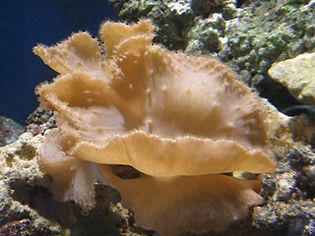
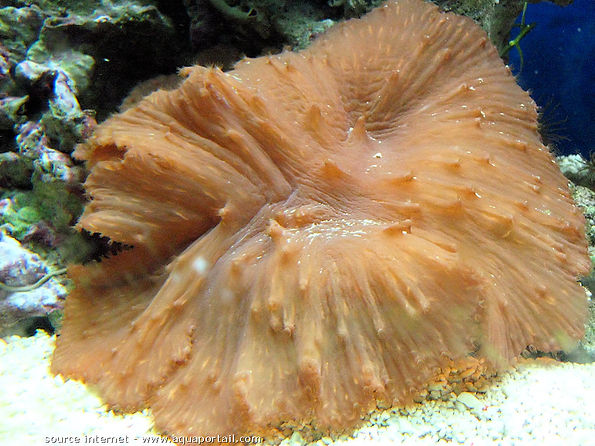


The Finger Leather Coral Sinularia notanda is a pretty laid back coral. With its ease of care and good looks, it makes a great coral for the beginner. It's a fast grower and an easy coral to propagate, which contributes to their predominating numbers in the ocean, but also means that it needs plenty of room in the reef aquarium.
Fingered Leather Corals are not as sensitive to handling during propagation as some corals and if you can get some of the vivid leathers, you can actually have a nice little income maker. Just follow simple guidelines to keep them healthy and they will grow quickly.
The range of colors this Finger Coral can be found in include purple, pink, gray, green, and yellow, but are usually brown to cream. They have stalks with tree-like branches, and from those form little branchlets. The branchlets have small autozooid (feeding) polyps which have the ability to retract fully. The tissue of S. notanda is dry and leathery to the touch, thus the term "leather coral". It's tissue is also tough, and not easily torn.
The Fingered Leather Coral is known by many common names including Finger Leather Coral, Rasta Leather, Green Finger Leather Coral, Pink Finger Leather Coral, Yellow Finger Leather Coral, Green Fiji, and Sinularis Finger Leather . Because it is similar in form to other leathers, many of the same common names are used interchangeably such as Leather Coral, Finger Leather, Knobby Leather Coral, and Flexible Leather Coral. When ordering this or any other leather coral, its best to make sure you use the scientific name.
An attractive easy care Sinularia species, the Finger Leather Coral is easy to keep and a great beginner soft coral. Like all of its genus, the S. notanda is one of the the most forgiving as far as light and water flow is concerned, and it is an easy coral to propagate. That being said, it does like a moderate water flow and a high direct lighting. They are fast growing, and they are toxic toward other corals due to their release of terpenes (poisons used to ward off encroaching corals), so give them plenty of room.
Scientific name
Family: Alcyoniidae
Species: Sinularia notanda
Status:
The Sinularia notanda is not listed on the IUCN Red List for Endangered Species.
Difficulty of Care :
Leather Coral Care: The Finger Leather Coral S. notanda is easy to keep, making it a great soft coral for the beginner. They like a moderate water flow and a high direct lighting. They are not as sensitive to handling as other soft corals, especially when propagation is done. But they are toxic toward other corals due to their release of terpenes (poisons used to ward off encroaching corals), and they do grow large, so they need plenty of space. They also regularly shed their top layers.
Foods / Feeding:
Leather Coral Feeding: In the wild, Sinularia corals have developed several feeding strategies. They capture microscopic food particles from the water column and can absorb dissolved organic matter. They are also photosynthetic, having a symbiotic relationship with a marine algae known as zooxanthellae, where they also receive some of their nutrients.
In captivity, they may be fed microplankton. This is especially important if the light is not on the higher end to support the zooxanthellae. When feeding the polyps are out, and as nutrients are captured, the polyps retract.
Aquarium Care :
Stable tank conditions are needed to keep the Sinularia genus. A water change that is a standard for any reef system, not to exceed 30% is needed. In general, a typical water change of 20% a month or 10% biweekly, depending on the bio load, is sufficient. Some have found success by doing a 5% water change once a week, keeping water quality high and reducing the need for most additives. Soft corals do need to have proper chemical levels for good growth.
Iodine is used up quickly in captive environments, and does need to be added to the top off water or to the tank regularly. Make sure you have a test to make sure your levels are sufficient. Frequent water changes are preferred over adding extra supplements.
Suggested levels for Sinularia species are:
-
Calcium: 385 - 450 ppm (Seachem makes a calcium additive that states 385 as sufficient. Anything over 400 tends to wear on pumps and other moving parts.)
-
Alkalinity: 3.2 - 4.8 MEQ/L (8 to 12 dKh - 10 is recommended)
-
Phosphates: 0, zero.
-
Magnesium: 1200 - 1350 ppm. (Magnesium makes calcium available, so if your calcium is low, check your magnesium levels before adding any more calcium.)
-
Strontium: 8 - 10. Strontium levels are suggested to keep the coral happy, and a kit for testing proper levels is suggested.
Aquarium Parameters :
A typical live rock/reef environment is what is needed for your Finger Leather Coral, along with some fish for organic matter production and plenty of room to grow.
Provide proper lighting and water movement. They need a moderate water flow and high direct lighting. Make sure the water flow does not shoot a straight hard stream directly at the coral, only random water current. The Sinularia genus is very aggressive toward other corals so be sure to provide plenty of room between species, and they can be toxic to stony corals
-
Minimum Tank Size / Length: 50 gallon (190 L) or larger
-
Marine Lighting: High and direct
-
Temperature: 68° - 83° F (20° - 28° C)
-
Salinity / Specific Gravity: 1.023 - 1.025
-
Water Movement: Low to moderate, with a random flow is suggested.
-
Water Region: Middle to low areas of the aquarium
-
Sex - Sexual differences :Specifically, the Sinularia polydactyla have females that remain erect and males retract and become flaccid during spawning. Other species are still being studied in this regard.

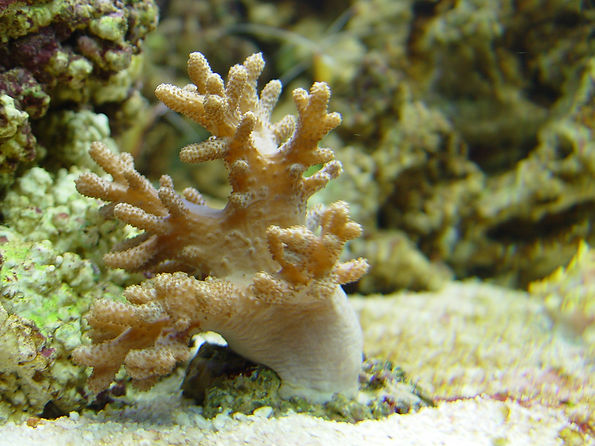
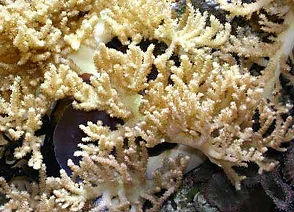
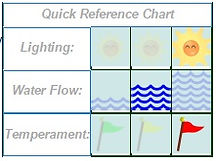
Spaghetti Finger Leather Coral, Thin Finger Coral
Soft Finger Coral, Rasta Leather
Sinularia flexibilis
The gentle sway of a Flexible Leather Coral has an almost hypnotic movement in the correct water flow!
Mesmerizing to watch, the Flexible Leather Coral Sinularia flexibilis is a bit more flexible than others in its genus. A more distinctive difference however, is that it is slimy to touch rather than having the dry, leathery feel most of the leather corals are known for.
Like other Sinularia sp., the Spaghetti Finger Leather Coral is not as sensitive to handling and is an easy coral to propagate. This contributes to their predominating numbers in the ocean and makes them ready availability for the reef aquarium. But water quality is important to them, making them a bit more challenging to care for than their siblings.
The S. flexibilis grow on hard substrates such as rubble or dead corals. They form encrusting colonies with finger like projections that have retractable polyps. They can be found in colors ranging from brown, tan, white and gray, and at times may be a more colorful green. The Flexible Leather Coral can resemble some tree corals, but generally have a more antler-like growth pattern and a very prominent, heavy base.
The Flexible Leather Coral is known by many common names including Rasta Leather, Spaghetti Finger Leather Coral, Flexible Leather Coral, Soft Finger Coral, or Thin Finger Coral. Because it is similar in form to other leathers, many of the same common names are used interchangeably such as Leather Coral, Finger Leather, Green Finger Coral, Finger Leather Coral, Scalloped Leather Coral, and Knobby Leather Coral. S. flexibilis are often mistakenly sold as a Finger Leather Coral or Colt Coral Alcyonium sp., but can be distinguished by their polyps which have a less feathery appearance. When ordering this or any other leather coral, its best to make sure you use the scientific name.
The Flexible Leather Coral is moderate in care to keep since they do need clean and stable water conditions. They like a moderate to strong water flow and moderate to high lighting. They also don't do too well in a new tank, and should be added to an established tank for best results. They are easier to care for when added to a tank with these parameters. S. flexibilis are toxic toward other corals due to their release of terpenes (poisons used to ward off encroaching corals), so they do need plenty of space.
Scientific name :
Family: Alcyoniidae
Species: Sinularia flexibilis
Status :
The Sinularia flexibilis is not listed on the IUCN Red List for Endangered Species.
Difficulty of Care :
Leather Coral Care: The Flexible Leather Coral S. flexibilis is moderate in care to keep since they do need clean and stable water conditions. They like a moderate to strong water flow and moderate to high lighting. They also don't do too well in a new tank, and should be added to an established tank for best results. They are easier to care for when added to a tank with these parameters. They are very toxic toward other corals due to their release of terpenes (poisons used to ward off encroaching corals), and they need plenty of space. They also regularly shed their top layers.
Foods / Feeding :
Leather Coral Feeding: In the wild, Sinularia corals have developed several feeding strategies. They capture microscopic food particles from the water column and can absorb dissolved organic matter. They are also photosynthetic, having a symbiotic relationship with a marine algae known as zooxanthellae, where they also receive some of their nutrients
In captivity, they may be fed microplankton. This is especially important if the light is not on the higher end to support the zooxanthellae. When feeding the polyps are out, and as nutrients are captured, the polyps retract.
Aquarium Care :
Stable tank conditions are needed to keep the Sinularia genus. A water change that is a standard for any reef system, not to exceed 30% is needed. In general, a typical water change of 20% a month or 10% biweekly, depending on the bio load, is sufficient. Some have found success by doing a 5% water change once a week, keeping water quality high and reducing the need for most additives. Soft corals do need to have proper chemical levels for good growth.
Iodine is used up quickly in captive environments, and does need to be added to the top off water or to the tank regularly. Make sure you have a test to make sure your levels are sufficient. Frequent water changes are preferred over adding extra supplements.
Suggested levels for Sinularia species are:
-
Calcium: 385 - 450 ppm (Seachem makes a calcium additive that states 385 as sufficient. Anything over 400 tends to wear on pumps and other moving parts.)
-
Alkalinity: 3.2 - 4.8 MEQ/L (8 to 12 dKh - 10 is recommended)
-
Phosphates: 0, zero.
-
Magnesium: 1200 - 1350 ppm. (Magnesium makes calcium available, so if your calcium is low, check your magnesium levels before adding any more calcium.)
-
Strontium: 8 - 10. Strontium levels are suggested to keep the coral happy, and a kit for testing proper levels is suggested.
Aquarium Parameters :
A typical live rock/reef environment is what is needed for your Flexible Leather Coral, along with some fish for organic matter production and plenty of room to grow.
Provide proper lighting and water movement. They need a moderate to stong water flow and like moderate to high lighting. Make sure the water flow does not shoot a straight hard stream directly at the coral, only random water current. TheSinularia genus is very aggressive toward other corals so be sure to provide plenty of room between species, and they can be toxic to stony corals
-
Minimum Tank Size / Length: 50 gallon (190 L) or larger
-
Marine Lighting: Moderate to high
-
Temperature: 76° - 79° F (24° - 26° C)
-
Salinity / Specific Gravity: 1.023 - 1.025
-
Water Movement: Moderate to strong, with a random flow is suggested.
-
Water Region: All areas of the aquarium
-
Sex - Sexual differences :Specifically, the Sinularia polydactyla have females that remain erect and males retract and become flaccid during spawning. Other species are still being studied in this regard. The S. flexibilis, once mature, will drop clones of themselves.
